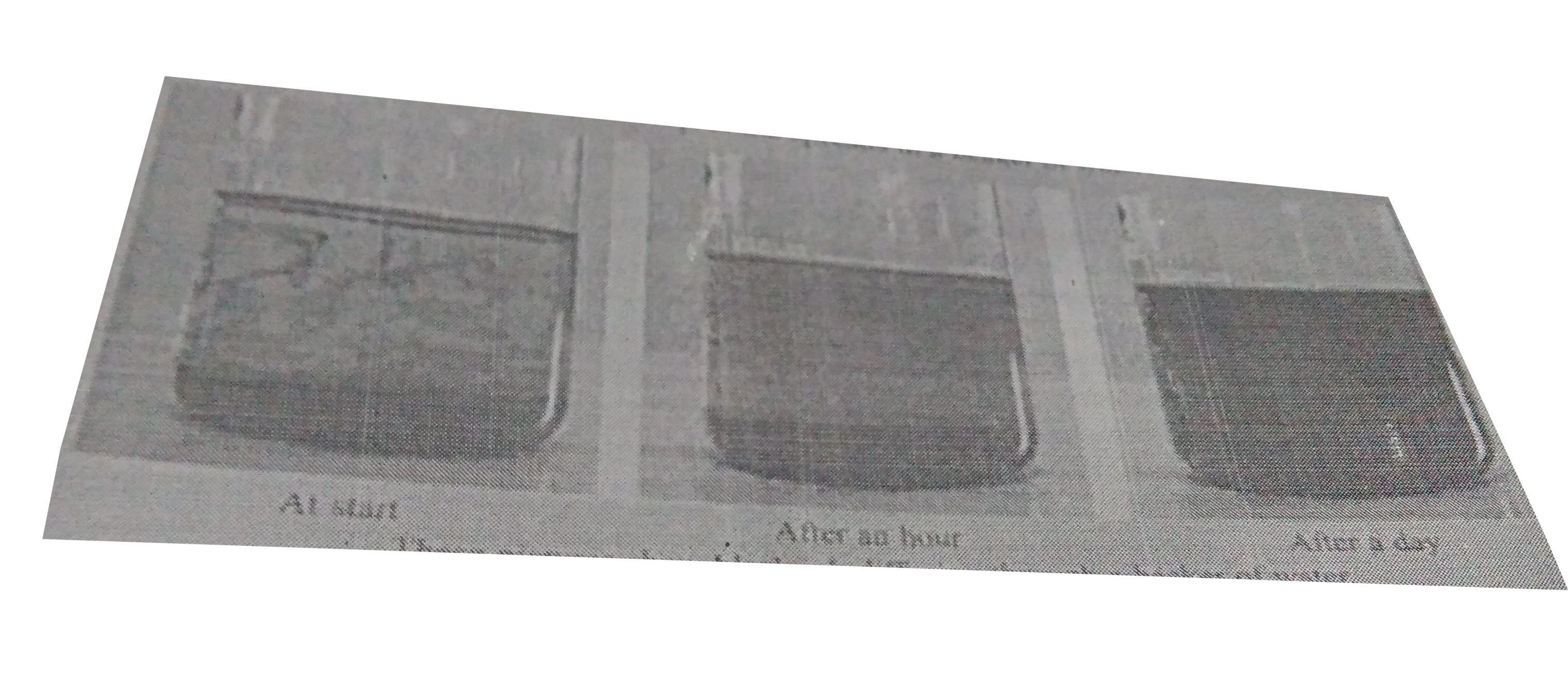An open beaker to water in equilibrium with water vapour is in a sealed container . When a few grams of glucose are added to the beaker of water , the rate at which water molecules :
leaves the solution decreases
leaves the vapour increases
leaves the vapour decreases
leaves the solution increases
To solve the problem, we need to analyze the situation when glucose is added to water in an open beaker that is in equilibrium with water vapor in a sealed container.
1. Understanding the Initial Condition:
- Initially, we have water in an open beaker that is in equilibrium with its vapor. This means that the rate of evaporation of water equals the rate of condensation of water vapor back into the liquid.
Hint: Remember that equilibrium means the rates of two opposing processes are equal.
2. Adding Glucose to Water:
- When glucose (a non-volatile solute) is added to the water, it dissolves and increases the number of particles in the solution.
Hint: Consider how adding a solute affects the properties of the solvent.
3. Effect on Vapor Pressure:
- The addition of glucose decreases the vapor pressure of the water. This is because the presence of solute particles (glucose) reduces the number of water molecules at the surface that can escape into the vapor phase.
Hint: Recall Raoult's Law, which states that the vapor pressure of a solvent is directly proportional to the mole fraction of the solvent in the solution.
4. Surface Area for Vaporization:
- The surface area available for vaporization decreases because some of the surface area is now occupied by glucose molecules. This means fewer water molecules can escape into the vapor phase.
Hint: Think about how the physical presence of solute affects the escape of solvent molecules.
5. Re-establishing Equilibrium:
- To re-establish equilibrium after the addition of glucose, more water molecules must enter the vapor phase to balance the reduced vapor pressure. This means that the rate at which water molecules leave the liquid phase (evaporation) will increase until a new equilibrium is reached.
Hint: Consider how systems respond to changes to maintain equilibrium.
6. Conclusion:
- Therefore, after adding glucose, the rate at which water molecules leave the beaker (evaporate) will increase in order to compensate for the decrease in vapor pressure and to reach a new equilibrium.
Final Answer:
The rate at which water molecules leave the beaker will increase after the addition of glucose.
- Initially, we have water in an open beaker that is in equilibrium with its vapor. This means that the rate of evaporation of water equals the rate of condensation of water vapor back into the liquid.
- When glucose (a non-volatile solute) is added to the water, it dissolves and increases the number of particles in the solution.
- The addition of glucose decreases the vapor pressure of the water. This is because the presence of solute particles (glucose) reduces the number of water molecules at the surface that can escape into the vapor phase.
- The surface area available for vaporization decreases because some of the surface area is now occupied by glucose molecules. This means fewer water molecules can escape into the vapor phase.
- To re-establish equilibrium after the addition of glucose, more water molecules must enter the vapor phase to balance the reduced vapor pressure. This means that the rate at which water molecules leave the liquid phase (evaporation) will increase until a new equilibrium is reached.
- Therefore, after adding glucose, the rate at which water molecules leave the beaker (evaporate) will increase in order to compensate for the decrease in vapor pressure and to reach a new equilibrium.
The rate at which water molecules leave the beaker will increase after the addition of glucose.
Topper's Solved these Questions
Similar Questions
An ice cube floats on water in a beaker with 9/10 th of its volume submerged under water. What fraction of its volume will be submerged, if the beaker of water is taken to the Moon where the gravity is 1/6th that on the Earth?
View SolutionName the process by which a drop of ink spreads in a beaker of water.
 View Solution
View Solution
Knowledge Check
- Question 1 - Select One
When NaOH is dissolved in a beaker containing water, the outer part of the beaker becomes warm. In this system
AHR>HPBHR<HPCHR=HPDcan not predict - Question 2 - Select One
A steel ball is floating in beaker containing mercury .If some water is poured in the beaker ,the steel ball will :
Amove upBmove downCcontinue in its positionDexecute vertical oscillation - Question 3 - Select One
When a small piece of beryllium was added to water taken in a beaker, what will you observe?
AVigorous chemical reaction occurs with evolution of a gas.BFormation of precipitate is seen .CColour of solution turns black.DNo reaction occurs.
When a crystal of copper sulphate is placed at the bottom of a beaker containing water, the water slowly turns blue. Why ?
View SolutionWhy is the vapour pressure of a solution of glucose in water lower than that of water ?
View SolutionThe temperature in which ice, water and water vapour exist in equilibrium is called
View SolutionA block of ice in which a piece of stone is embedded is floating on water contained in a beaker. When all the ice melts the level of water in the beaker
View SolutionA piece of ice is floating in a beaker containing water. When whole of the ice melts
View Solution
